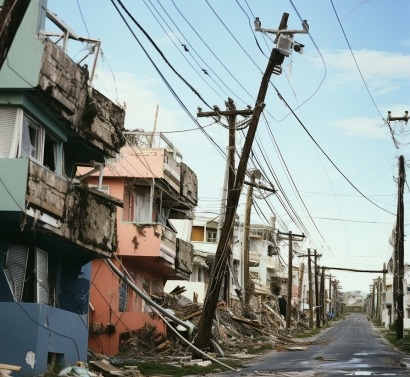
Microgrids are isolated energy sources operating separately from the primary grid. They keep the lights on during widespread blackouts while supplying an electricity resource to aid emergency response and system recovery. Explore the advantages of microgrids during major crises and case studies proving their effectiveness.
Extreme weather conditions and natural disasters will continue placing pressure on transmission and distribution lines. While microgrids are not new, the federal government has recently implemented funding programs and regulations to develop these standby power systems.
The U.S. installed 687 microgrids in 2022, increasing energy capacity by 19% from 2017. Meanwhile, experts predict microgrid generation will skyrocket at a 22.4% compounded annual growth rate from 2022 to 2030.
During emergencies, microgrids replace the traditional grid as the primary electricity source. Some of their benefits include utilizing solar and wind renewable sources to reduce emissions, strengthening local economies, and promoting job growth.
Suppose there is a county-wide power outage after a California wildfire. Standby power, such as a microgrid, could take only one minute to turn on. As a result, communications systems, grocery stores, hospitals and medical facilities would function properly. Likewise, vulnerable citizens — particularly older adults, children and people with disabilities — can operate medical equipment, heat and cooling.
Worldwide, microgrids have delivered electricity to vulnerable communities impacted by power outages during significant events. Some areas have never had access to power. For example, in the Upper Blinkwater of the Eastern Cape of South Africa, a remote village of about 70 households received electricity for the first time in 2020 when a microgrid was installed.
Are microgrids the way of the future? Here are three case studies of how they are helping build energy resilience.
Winter Storm Uri caused mass power outages for 69% of Texans in 2021. Meanwhile, 210 people died due to the storm, with many deaths attributed to hypothermia from freezing indoor temperatures, chronic medical conditions and exposure to carbon monoxide.
For some, blackouts lasted days. Others struggled to obtain groceries, water and emergency medical attention.
However, across Houston, H.E.B.'s supermarkets stayed operational because they had implemented microgrids through Enchanted Rock. The company's microgrid ensured accessibility to essentials and services for locals. Citizens Medical Center in Victoria, Texas — a 338-bed medical facility specializing in trauma care, cancer care and rehabilitation — also successfully kept itself up and running thanks to a microgrid commissioned after Hurricane Harvey.
In 2017, Hurricane Maria left millions of Puerto Rico residents without power for 11 months after the storm damaged 65% of transmission lines. When Hurricane Fiona hit in the fall of 2022, Puerto Rico faced several weeks of outages again.
Now, a new solar-powered microgrid project in Adjuntas will allow 14 businesses to operate with electricity for 10 days during outages. Residents of Adjuntas will no longer have to rely on the island's expensive and broken grid system while still being able to acquire essential goods and services. Another microgrid project — Cooperativa Hidroeléctrica de la Montaña — will be the island's first rural power cooperative, connecting several structures once completed.
Puerto Rico's first microgrid has successfully and reliably electrified seven buildings in Castañer — including two homes, a post office and a bakery — which all share battery-stored power. During the day, solar photovoltaic (PV) panels charge the batteries.
Ukraine was on its way toward becoming independent from Russia's grid when the latter invaded. Although Ukraine had long planned to pull back and join the European Union's power source, the transition had to occur much quicker.
With help from the U.S. Agency for International Development and the U.S. Department of Energy's National Renewable Energy Laboratory (NREL), Ukraine implemented microgrids to enhance its resilience and diversify its renewable portfolio. NREL is now working with Ukraine on a microgrid pilot project to explore how PV storage technologies can generate reliable electricity amid the country's current state.
Grid operators can take a load off of the traditional grid with microgrids. During emergencies, these localized systems prove essential in saving lives and preventing significant financial losses. With weather impacts and disasters occurring more frequently, the world needs microgrids to meet emergency power demands more than ever,

